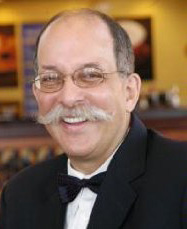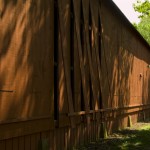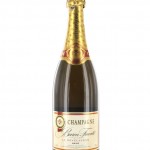
The Modern Butlers’ Journal volume 8, issue 4
International Institute of Modern Butlers
 Message from the Chairman
Message from the Chairman
Last year, the Institute engaged in a first for the profession: the training of guest-facing staff of an upscale retirement community in the superior service skills of butlers. The staff are not butlers and do not provide all the services that a butler could in a private estate or even a hotel, but they know how to deliver the same solicitous level of caring service. The media picked up on it this year, validating the experiment carried on by the visionary owners and management of On the Avenue, in Toronto, Canada. This is just one project across various industries and walks of life where the Institute is engaged in its mission: the application of butler standards and expectations of service to all service industries. The target we’d like to approach next? How about government agencies, some of which excel and some of which leave much to be desired?
On a different note, the MBJ is available to anyone with something of interest or value to the profession, to share their information. Feel free to email your best efforts: the editor won’t bite, promise.
Letters to the Editor
“I appreciate all you do for the profession! I stumbled across and printed the article on Brand Butler a while back and am trying to relocate it so I can forward it to colleagues for use in an upcoming DEMA meeting in Greenwich. Can you send the link to relocate it? GW
Editor: Thank you. We have had the published articles on the profession (some thirty of them) placed in their own category again just recently: With the upgrade in design of the Modern Butlers web site last year, the articles, and the wealth of information they provided, were mixed in with blogs and Modern Butler Journals, so became hard to find. Sorry for the inconvenience. You can find that article, as with all the published articles, at resources>published articles.
As an additional side note to the readership, the list now includes the latest article just published, What is Behind the Gyrations of the World Economy & Where is It Going? One person expressed disappointment last year at finding an article not directly relating to the butler profession included in the MBJ—one that addressed the concern expressed by many at the time about Fukushima Daiichi, the radiation possibly impacting all life on earth from the Japanese nuclear reactor breakdowns.
As with the world economy article, both issues have some impact on butlers in private service and their employers, as well as butlers in hospitality and other sectors, and their colleagues and employers. By impact is meant having some bearing upon their ability to do their work effectively, not to mention their welfare.
The MBJ, therefore, will continue to carry such papers and articles very occasionally as a service to its membership. The next one being researched is our food and water supply and quality—something, we believe, most people will concede has some bearing upon a butler’s ability to provide his or her most traditional of services.
***
“I agree that quite a few butler academies copy and paste their materials. I saw this first in 2000 in [Ed: location deleted]. Some see the prices that can be charged for courses and think that, with little-to-no knowledge, they can make money by setting up an academy. There is a relatively new academy in the world that makes me crazy with its emails, Twitter, and Facebook outpourings. I asked where they acquired their experience and who had labelled them the best in the world, as was being claimed. No satisfactory answer was received, of course. Only clients give you such a label by inviting you again. It is disconcerting that such people are given assignments by principals who most of the time have no idea they are being shortchanged because they look to that person for guidance on what is a butler.” TW
***
“I am shocked but not surprised at the foreshortened butler training that is taking place, as covered in this most recent MBJ. I have witnessed or heard about this time and again (as have many other professionals, no doubt)—the perpetrators putting on a good dog-and-pony show that provides instant gratification until the unfortunate lack of change or improvement in the real world leaves the employer or manager back in the same unhappy position: needing to train their employees: this standard does create a negative impression and stigmatize the profession as a whole. AJS.
***
Scam Alert: One member asked for advice on a job offer from a Jefferson Hotel in the US—a curious move, given that he is in private service, but he is free to move in any direction he pleases and so, as he was unfamiliar with the US environment, felt some advice to be in order: “I have just received the attached job offer, if I may please ask for your opinion? I applied online a while ago and this is the response.” He had spotted already that hours were listed as Monday through Friday and additionally, web sites, email addresses, and area codes were inconsistent.
Editor: Too many things do not make sense, most particularly the use of language; the amount of time off (usual in the US is 2 weeks, not 2 months plus 20 days); and the requirements that the applicant arrange his visa through a specific office.
To all private service and hospitality butlers outside the US hoping for a position, please see this link and steer clear of this scam.
Butlers in the Media
An interesting article in the Sunday Independent about domestic service in the UK, which seems representative of service in other countries (with [apologies for not including it in the last MBJ and] thanks toMr. Aris Chrisanthakopoulos, who brought it to our attention and is quoted in the article).
Forbes Travel Guide provides a short summary of three “unique” butler services in hotels: a fragrance butler (which is new, although the person bringing the goodies to guests is not a butler); a waiter who presents tea as a “tea butler” (the photograph shows a well-presented tea service, but the service is far from unique); and a bath butler (not unique either, and the menu is not overly creative, but the butler is delivering it and no doubt guests enjoy it).
In a wonderful example of the media having a firm idea of what they want to say and finding information to support it, come what may, a Bloomberg reporter ignored my information to publish the fiction that lady butlers are paid more than their male counterparts. How did they come to this conclusion? Bloomberg reviewed census data, where butlers, apparently, are placed in the same category as house sitters and shoe shiners—where females earn $1.02 for every $1 their male counterparts earn and the average income is $25,000 pa. While the main thrust of the article is fine—showing that in most professions, males are paid more than females—what makes the article illogical in respect to butlers is
a) the incorrect assumption that butlers are the same as shoe shiners and house sitters in terms of professional skills and salary ranges. Yes, they work to service others in a private capacity, but using the same level of logic, one could equally well combine the chairman of Goldman Sachs and his secretary into a single category of “finance” and reach a similarly illogical conclusion;
b) the idea that, because female shoe shiners (have you ever seen a female shoe shiner?) earn 2 cents more per shoe shine than men, female butlers earn more, too;
c) Omitted information: of the 38,210 people surveyed in this category, how many were butlers? 3? 300?
As I told the reporter, nobody knows whether male butlers are paid more than female butlers. As we all know, salaries are all over the map depending on the employer, the duties demanded of the butler, the experience of the butler, the value to the employer of that particular butler, etc. The gender of the butler has no bearing on salary range. And as salary is only part of the entire package when room, board, transport, health insurance and bonuses are factored in, salary alone would be an incomplete measure.
Oh dear, another “The butler did it” reported in a variety of media. Whenever tired writers see the word “butler,” the rest of the phrase that should immediately be struck from what they are writing, inevitably makes its way into print anyway. In this case, however, there is the possibility that the butler did do it, and a jury has just decided as much. Of what was he found guilty? Helping hold his employer to ransom at syringe point and then fleeing with nary a penny but apparently leaving behind enough clues to make sure he was caught.
Do we have to cringe, as a professional body? Yes, but it would be instructive to consider whether the butler was ever trained as one and what other qualifications he might have had to lay claim to such a title. As far as can be determined using the information available in the media, the butler worked for the victim for only a few months in 2006 before being fired for crashing one of the employer’s vehicles while using it on an unauthorized personal trip. Prior to this position as “butler,” he held chauffeur and personal assistant positions for three New York families. Judging from his background and his ethic level, it seems his hiring as a butler was the result of the willingness by agencies and employers to take on butlers based on experience in similar lines of work, and without any training for the position—as logical as hiring a trainee accountant to work as a lawyer because they are both professional services required to deal with business and government requirements.
The home invasion was not just a case of a bad apple, but also a flawed system that we, the various professions involved in private service, can do something about to better serve our clientele.
The wonders of technology: there is now a car butler in your iPhone.
 by Wayne Fitzharris of Global Search International
by Wayne Fitzharris of Global Search International
To update all readers of the Modern Butlers’ Journal on the last MBJ post on The Butler movie being directed by Lee Daniels, you will be pleased to know that more progress is being made in the casting: It has been reported that Jane Fonda will play Nancy Reagan, and Forrest Whitaker, Oprah Winfrey, and David Oyelowo may also be in the cast.
Mr. Allen began his career in 1952, when segregation laws were still in place, working his way up from the pantry to waiter to Maitre D’ and finally to White House butler, serving under eight Presidents before retiring in 1986.
Reportedly, First Lady Nancy Reagan came looking for Eugene in the kitchen one day: She wanted to remind him about the upcoming state dinner for then German Chancellor, Helmut Kohl. Mr. Allen told her he was well ahead in the planning and had already picked out the china. She replied that he would not be working that night: “You and Helene are coming to the state dinner as guests of President Reagan and myself.”
Few butlers there are who can make such a claim.
Placement
We have noticed a definite increase in requests for butlers in private estates, as well as head butlers, from various parts of the world. If you are in, or anticipate being in, the job market again, and we do not have your resume/CV or a recent copy, feel free to e-mail it with a statement of your position and location goals, and salary requirements.
Alternatively, if you have experience in hospitality, catering, or customer service, then the Queen of England is looking for a footman to provide a range of services, from messenger and valeting duties to food and beverage service to members of the Royal Family and their guests. Live-in, 15,000 GBP—meager salary but an excellent opportunity to learn the ropes (including training and apprenticeship) and launch yourself in this new profession while serving a notable family.
Casting call for any Brits living in, or able to work in, the US, who would like to audition for a TV series on the day-to-day life of a British household staff working with an American family. The New York-based production company specializes in documentaries and (non-gutter) reality television. Positions available: housekeeper; chauffeur, nanny, and PA/Secretary—the last three needing to be in their 20s and 30s. Email if interested.
Cigars, Part II
Harvesting & Processing Tobacco Part 1
The traditional tobacco harvest is somewhat unusual in that, rather than bringing the harvest in all at once as with other crops, the leaves are harvested in phases. Called ‘priming’, the plants are primed in thirds or fifths, meaning that there will be either three or five harvests to complete the process.
The plant is harvested from the bottom up as the leaves nearest the bottom start turning brown first. In this way, eac successive priming moves up the plant until the final priming removes the leaves at the top.
The leaves may be plucked with a rapid downward motion, or may be cut off with a small hatchet. The leaves are very large, and there will typically be 18 useable leaves spread over five primings. From bottom to top, these primings are referred to as Volado, Seco, Viso, Ligero, and Corona. These areas of the plant are defined and named as they have special significance to cigar makers. Some parts of the plant produce leaves that are stronger in flavour, while others are weaker. All are used in different ways – they may become cigar filler, binders, or wrappers.
This method of harvesting is obviously very labour intensive and is only used where labour costs are low, or when making premium handmade cigars. The alternative is whole-stalk harvesting, where the entire plant is simply cut off at the base.

Once the leaves have been harvested, they must be dried slowly to prevent rot. The process is called “curing” and takes from 25 to 45 days. The leaves may be tied in bunches and suspended from horizontal poles, or they may be pierced and strung up to dry. During curing, the fresh, bright green leaves turn brown and develop their distinctive aroma as the chlorophyll slowly breaks down and is replaced by carotene. By varying the curing process, the colour of the final leaf can be manipulated.

In warm climates, air drying takes place in well ventilated barns with slatted sides. The temperature inside can be controlled by opening or closing wide doors, following the passage of the sun across the sky. An alternative, called flue curing, is used in cooler climates. Here the barn is heated but care must be taken to prevent the leaves drying out too quickly. Sawdust or hardwood may also be burnt in the barn to aid drying and impart flavour. These curing barns are often located alongside the very fields in which the tobacco is grown.
Let’s Talk about Wine, Part V
 by Amer Vargas
by Amer Vargas

In the current article, we deal with the production of the most famous of alcoholic drinks, the king of wines, Champagne.
To start with, Champagne is a sparkling wine, but not all sparkling wines are Champagne. The drink acquired its name from the region in the North-East of France where it is produced. Any wine made under the same conditions, with the same ingredients and following the same procedure has no right to call itself Champagne if it is not grown in this region; instead, it’s called sparkling wine, with the right to show on the label that it has followed the same procedure. What’s so special about Champagne, the region? Both its climate and its soil: temperature and humidity are ideal for growing the particular grapes to make the desired drink, and the soil is very rich in chalk and very absorbent, allowing the vines to obtain just the right amount of water needed to prevent them from drying out or drowning.
Champagne is made of 3 different grape varietals mainly, that can be used singly or mixed in different percentages. Other varietals are sometimes used to give the drink different hints of flavor.



Pinot Noir is the kind of grape that improves with aging, so it’s presence is especially important in Champagnes to be aged for several years.
If the Champagne is made of 100% Chardonnay, it’s called Blanc de Blancs (white of whites), and if it’s 100% Pinot Noir, Noir de Noirs (black of blacks), due to the color of the grape skin used.
Champagne is made using the “Méthode Champenoise” or “Méthode Traditionnel.” Legend has it that Champagne was fine-tuned by a Benedictine monk called Dom Pérignon in the second half of 17th century (yes, the same famous Champagne brand).
In the beginning of the 17th century, many wine producers from the area started to bottle their white wines before the fermentation had finished in order to preserve the aromas. As a result, bubbles where produced (without them initially realizing it) and vintners started to worry and call that drink the “devil’s wine,” as bottles suddenly exploded or the cork simply popped out. Dom Pérignon introduced some changes that would lead to the creation of the exquisite libation we enjoy nowadays: he was the first one to choose the grapes carefully to make the best wines in the area, and took care of the devil by holding the cork with a stiff metal staple and bottling the drink in thicker glass bottles (made available courtesy of advances in the manufacture of glass bottles by the British, who were actually the first to make sparkling wines—but that is a different story).







